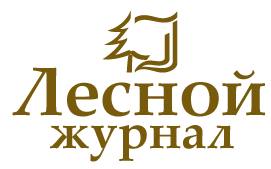

Address: Naberezhnaya Severnoy Dviny, 17, Arkhangelsk, 163002, Russian Federation, Northern (Arctic) Federal University named after M.V.Lomonosov, office 1425
Phone: +7 (8182) 21-61-18
E-mail: forest@narfu.ru
http://lesnoizhurnal.ru/en/
|
Silvicultural Principles of the Technologies for the Management of Commercial Burnt Stands after Ground Fires. P. 187–197
|
 |
Denisov S.A., Domracheva Z.N., Voldaev M.N.
UDС
630*15:630*43+630*34+630*611
DOI:
10.37482/0536-1036-2025-5-187-197
Abstract
The pine forests on the left bank of the Vologda River between Nizhny Novgorod and Kazan have developed on sandy soils and are highly susceptible to fire, making their protection and restoration difficult. In the context of a changing climate and an increasing frequency of large fires, it is necessary to develop effective methods for eliminating their consequences. The aim of the research has been to substantiate forestry requirements for the organization of logging operations in burnt stands, ensuring a balance of wood harvesting and promoting the natural restoration of pine trees. Commercial burnt pine stands of the Republic of Mari El have been chosen as a research object. It has been established that the demutation processes in the burnt areas of 1921, 1972, 2010 and 2021 under the conditions of the pine forest row have proceeded stably with the dominance of pine. The germination rate of pine seeds obtained from cones after the ground fires in 2010 and 2021 has been 40–80 %, which correlates with the intensity of the pyrogenic impact. Silvicultural recommendations have been developed for the effective use of the post-pyrogenic seed potential of pine, including 2-step sanitary felling using the gap-based method to reduce the risk of windfalls and soil drying out. It is recommended to cut down 50 % of the wood stock in burnt stands using the gap-based method in the first 8 months after a fire, and to carry out final felling on the snow cover 15–20 months after the fires. Soil mineralization and gap-based felling of commercial burnt stands can provide favorable conditions for the rooting of seedlings and reduce their elimination from possible precipitation shortages. This will reduce the loss of commercial wood and preserve local pine populations, significantly reducing the volume of artificial reforestation.
Keywordscommercial burnt stands, forest fires, primary post-pyrogenic seed potential of pine, sanitary felling, gap-based felling, the Republic of Mari El
For citation
Denisov S.A., Domracheva Z.N., Voldaev M.N. Silvicultural Principles of the Technologies for the Management of Commercial Burnt Stands after Ground Fires. Lesnoy Zhurnal = Russian Forestry Journal, 2025, no. 5, pp. 187–197. https://doi.org/10.37482/0536-1036-2025-5-187-197
References
- Buryak L.V., Ageev A.A., Saltsevich Yu.V. Technologies for Reforestation of Burned Areas in Forest Regions of Siberia: Methodological Guidelines. Pushkino, All-Russian Research Institute for Silviculture and Mechanization of Forestry, 2021. 64 p. (In Russ.).
- Dvoretskij M.L., Alekseev P.V., Mamaev I.V., Pchelin V.I. The Impact of the 1972 Fires on the Commercial Structure of Pine Stands and Some Physical and Mechanical Properties of Wood. Problemy likvidatsii posledstvij lesnykh pozharov 1972 g. v Marijskoj ASSR. Yoshkar-Ola, Mari Book Publ. House, 1976, pp. 110–113. (In Russ.). Окончание табл. 2
- Denisov S.A. Regulating the Role of Birch in the Natural Regeneration of Burnt Areas. Lesnoe khozyajstvo, 1979, no. 7, pp. 19–21. (In Russ.).
- Denisov S.A., Domracheva Z.N., Demicheva N.V. Ecological and Silvicultural Peculiar Features of Natural Regeneration of Pine Trees on the Fire-Sites of Forest Middle Trans-Volga Region. Vestnik Povolzhskogo tekhnologicheskogo universiteta. Seriya: Les. Ekologiya. Prirodopol’zovanie = Vestnik of Volga State University of Technology. Series: Forest. Ecology. Nature Management, 2021, no. 1 (49), pp. 47–63. (In Russ.). https://doi.org/10.25686/2306-2827.2021.1.47
- Denisov S.A., Domracheva Z.N., Motova K.A., Ozhiganov M.A., Chilikova S.A. The Impact of Fire in a Vaccinium-Type Pine Forest on the Germination and Quality Characteristics of Pine Seeds Mortality. Vestnik Povolzhskogo tekhnologicheskogo universiteta. Seriya: Les. Ekologiya. Prirodopol’zovanie = Vestnik of Volga State University of Technology. Series: Forest. Ecology. Nature Management, 2022, no. 2 (54), pp. 26–39. (In Russ.). https://doi.org/10.25686/2306-2827.2022.2.26
- Denisov S.A., Konukhova T.A., Rachkova T.S. Forest Restoration Management at the Fire Sites. Vestnik Povolzhskogo tekhnologicheskogo universiteta. Seriya: Les. Ekologiya. Prirodopol’zovanie = Vestnik of Volga State University of Technology. Series: Forest. Ecology. Nature Management, 2015, no. 3 (27), pp. 5–17. (In Russ.).
- Denisov S.A., Shakirova Z.N. Influence of Thermal Conditions of Creeping Fire on Viability of Scots Pine Seeds. Vestnik Povolzhskogo tekhnologicheskogo universiteta. Seriya: Les. Ekologiya. Prirodopol’zovanie = Vestnik of Volga State University of Technology. Series: Forest. Ecology. Nature Management, 2017, no. 4 (36), pp. 35–47. (In Russ.).
- Iozus A.P., Zelenyak A.K., Kolesova O.N. Features of Flowering and Fruiting of Scots Pine in the Lower Volga Region. Sovremennye problemy nauki i obrazovaniya = Modern Problems of Science and Education, 2012, no. 6. (In Russ.).
- Kalinin K.K. Large-Scale Forest Fires in the Middle Volga Forest Region and the System of Forestry Measures to Eliminate Their Consequences. Yoshkar-Ola, Volga State University of Technology Publ., 2012. 364 p. (In Russ.).
- Koba V.P., Zhigalova T.P. Experimental Assessment of Post-Pyrogenic Viability of Crimean Pine Seeds. Lesovedenie = Russian Journal of Forest Science, 2018, no. 6, pp. 417– 425. (In Russ.). https://doi.org/10.1134/S0024114818050042
- Forest Encyclopedia: in 2 vols. Ed. Board: G.I. Vorob’ev (ed.-in-chief) et al. Moscow, Soviet Encyclopedia, 1985, vol. 2. 631 p. (In Russ.).
- Makarov A.V. Technical Properties of Wood Damaged by Different Types of Fires. Lesotekhnicheskij zhurnal = Forestry Engineering Journal, 2011, no. 4, pp. 14–18. (In Russ.).
- Nezabudkin G.K. Artificial Reforestation of Burnt-Out Forests. Problemy likvidatsii posledstvij lesnykh pozharov 1972 g. v Marijskoj ASSR. Yoshkar-Ola, Mari Book Publ. House, 1976, pp. 76–81. (In Russ.).
- Sannikov S.N., Sannikov D.S., Tokarev B.V. Forest Soil Preparation Unit: Patent RF no. 11950 U1, 1999. (In Russ.).
- Petrov A.P. Types of Regeneration of Burnt Areas of the Volga Forestry Enterprise of the Mari Autonomous Oblast: A Separate Reprint from the “MAO” Journal, no. 2-3, 1934. Yoshkar-Ola, Mari Research Institute, 1934. 56 p. (In Russ.).
- Sannikov S.N., Podshivalov V.A., Sannikov D.S. Guidelines for Promoting the Natural Regeneration of the Main Species in Burnt-Out Forests of Western Siberia. Yekaterinburg, Ural Branch of the Russian Academy of Sciences, 2000. 51 p. (In Russ.).
- Sannikov S.N., Sannikov D.S. Felling-System and Regeneration of Pine Forests on Ecological-Genetic-Geographical Basis. Sibirskij lesnoj zhurnal = Siberian Journal of Forest Science, 2015, no. 6, pp. 3–16. (In Russ.). https://doi.org/10.15372/SJFS20150601
- Sannikov S.N., Sannikova N.S. The Ecology of Natural Pine Regeneration under the Forest Canopy. Moscow, Nauka Publ., 1985. 152 p. (In Russ.).
- Sannikova N.S., Sannikov S.N., Kochubei A.A., Petrova I.V. Natural Pine Regeneration on Burns in Forest-Steppe of Western Siberia. Sibirskij lesnoj zhurnal = Siberian Journal of Forest Science, 2019, no. 5, pp. 22–29. (In Russ.). https://doi.org/10.15372/SJFS20190503
- Raevskij B.V. Calculation of the Yield of Cones and Seeds on a Scots Pine Seed Plantation: Certificate of State Registration of a Computer Program no. RF 2020665170, 2020. (In Russ.).
- Trestsov B.I. Forests of the Mari ASSR and the Elimination of the 1972 Forest Fires. Problemy likvidatsii posledstvij lesnykh pozharov 1972 g. v Marijskoj ASSR. Yoshkar-Ola, Mari Book Publ. House, 1976, pp. 5–14. (In Russ.).
- Tyukavina O.N., Gudina A.G. Heating Capability of Postpyrogen Pine Wood. Lesotekhnicheskij zhurnal = Forestry Engineering Journal, 2020, vol. 10, no. 2 (38), pp. 188– 195. (In Russ.). https://doi.org/10.34220/issn.2222-7962/2020.2/19
- Shvedov E.I., Vas’kov S.P., Alekseev I.A. Features of the Destruction of Wood Damaged by Fire. Sovremennye problemy drevesinovedeniya. Voronezh, 1981, pp. 75–76. (In Russ.).
- Yunitskij A.A. Silvicultural Characteristics of the Mari Burnt Forests. Yoshkar-Ola, Margiz Publ., 1933. 82 p. A Separate Reprint from the Journal “Izvestiya Povolzhskogo Lesotekhnicheskogo Instituta”. (In Russ.).
- Yashnov L.I. A Review of Reforestation Research in Burnt Areas of the Mari Region, Conducted by the Department of General Forestry. Izvestiya Kazanskogo instituta sel’skogo khozyajstva i lesovodstva, 1930, no. 1, pp. 26–41. (In Russ.).
- Alvarez R., Valbuena L., Calvo L. Effect of High Temperatures on Seed Germination and Seedling Survival in Three Pine Species (Pinus pinaster, P. sylvestris and P. nigra). International Journal of Wildland Fire, 2007, vol. 16, no. 1, pp. 63–70. https://doi.org/10.1071/WF06001
- Calvo L., Hernández V., Valbuena L., Taboada A. Provenance and Seed Mass Determine Seed Tolerance to High Temperatures Associated to Forest Fires in Pinus pinaster. Annals of Forest Science, 2016, vol. 73, pp. 381–391. https://doi.org/10.1007/s13595-015-0527-0
- Castoldi E., Molina J.A. Effect of Seed Mass and Number of Cotyledons on Seed Germination after Heat Treatment in Pinus sylvestris L. var. iberica Svob. Forest Systems, 2014, vol. 23, no. 3, pp. 483–489. https://doi.org/10.5424/fs/2014233-05480
- Keenan R.J. Climate Change Impacts and Adaptation in Forest Management: a Review. Annals of Forest Science, 2015, vol. 72, no. 2, pp. 145–167. https://doi.org/10.1007/s13595-014-0446-5
- Ladd P.G., Zhao X., Enright N.J. Fire Regime and Climate Determine Spatial Variation in Level of Serotiny and Population Structure in a Fire-Killed Conifer. Plant Ecology, 2022, vol. 223, pp. 849–862. https://doi.org/10.1007/s11258-022-01243-8
- Stephan K., Miller M., Dickinson M.B. First-Order Fire Effects on Herbs and Shrubs: Present Knowledge and Process Modeling Needs. Fire Ecology, 2010, vol. 6, pp. 95–114. https://doi.org/10.4996/fireecology.0601095
- Méndez J., Morales G., Nascimento de L., Otto R., Gallardo А., Fernández-Palacios J.М. Understanding Long-Term Post-Fire Regeneration of a Fire-Resistant Pine Species. Annals of Forest Science, 2015, vol. 72, pp. 609–619. https://doi.org/10.1007/s13595-015-0482-9
|
Make a Submission


Lesnoy Zhurnal (Russian Forestry Journal) was awarded the "Seal of Recognition for Active Data Provider of the Year 2025"

|







